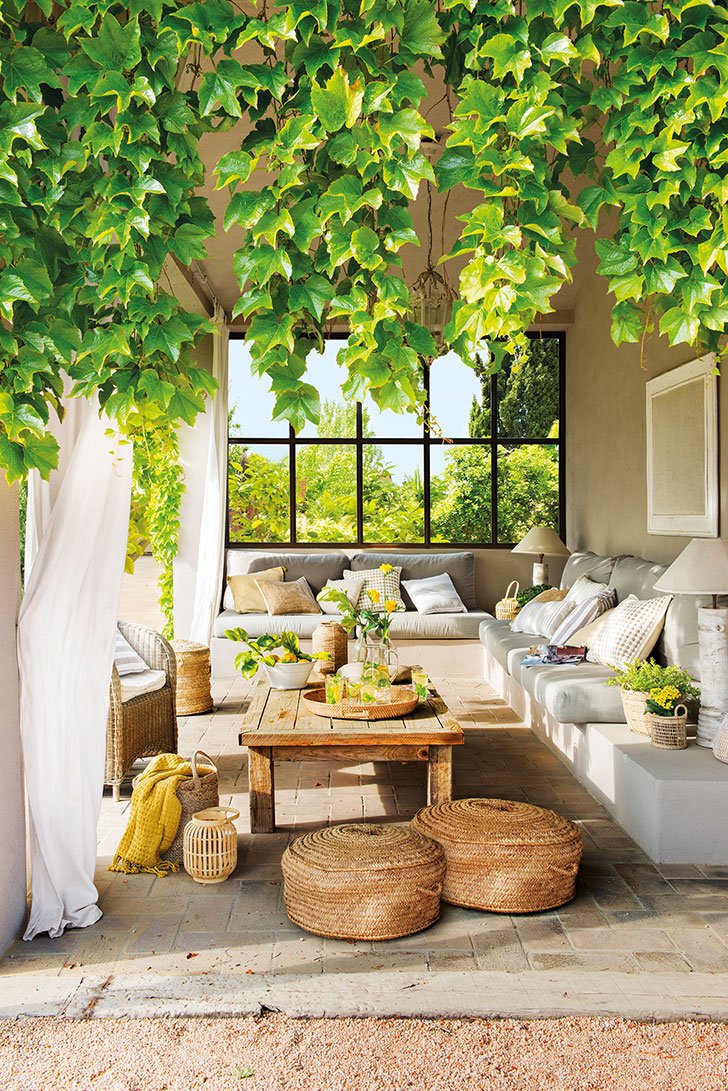#6041. Mediterranean Terrace: A Living Dialogue Between Interior and Nature

This image presents a magnificent embodiment of the concept of merging nature with living space. Before us is a summer veranda or terrace of a country house, where the main decorative element is live vegetation—lush ivy that literally frames the space, creating a natural green canopy. This is a vivid example of how architectural facade design can organically incorporate elements of living nature, transforming an ordinary terrace into an oasis.
The veranda interior is decorated in a Mediterranean style with elements of eco-design. A soft built-in light-colored sofa group with simple decorative pillows is located along the wall with a panoramic window that opens to a view of the green garden. The central place in the composition is occupied by a massive wooden table made of aged wood, which emphasizes the natural aesthetics of the space.
The color palette of the interior is built on neutral beige and gray tones with bright accents of yellow in textiles and decor, creating a feeling of sunniness and warmth. Textures play an important role in shaping the image: natural woven elements (poufs, baskets, armchair) add authenticity and tactile comfort to the space.
Special attention should be paid to the use of textiles: light white curtains, a yellow throw, and various pillows—all these elements add softness and coziness to the design. The composition is complemented by live plants in pots and fresh citrus fruits in a bowl on the table, which strengthens the connection with nature and emphasizes the natural beauty of the space.
This design demonstrates how to create a comfortable living space on the border of house and garden, where the clear lines between interior and exterior are blurred. Such an approach can be adapted even for small verandas or balconies, using vertical gardening, natural materials, and a well-thought-out natural lighting system.